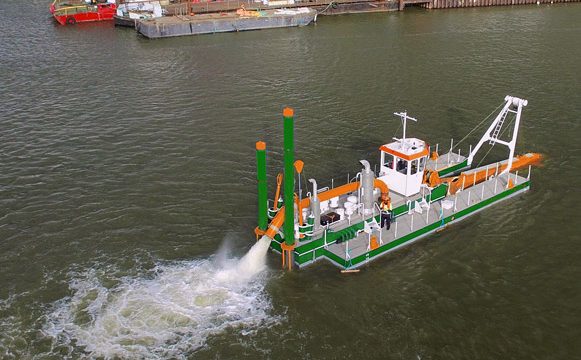
Dredges are large machines that are used to remove sediment and debris from waterways. They play a crucial role in maintaining the navigability of ports, harbors, and other water bodies. Just like any other machine, proper maintenance is necessary to keep dredges operating efficiently and effectively.
Maintenance procedures for dredging equipment can vary depending on the type of dredge and its components. However, there are some key areas that should always be focused on during routine dredge maintenance to ensure the longevity and performance of the dredge.
Hydraulic systems:
Hydraulic systems are integral to the operation of dredges, controlling the movement of various components, including pumps and booms. Regular maintenance of hydraulic systems involves checking fluid levels, inspecting hoses and fittings for leaks, and ensuring that the hydraulic fluid is clean and free from contaminants. Operators should replace filters according to the manufacturer’s recommendations to prevent clogs and maintain system efficiency. By keeping the hydraulic system in optimal condition, operators can avoid breakdowns and ensure smooth operation.
Pump maintenance:
The dredge pump is a key component responsible for transporting sediments and water. Regularly inspecting the pump for signs of wear, such as worn impellers and seals, is essential. Operators should ensure that the pump is free of debris and that the intake and discharge lines are clear. Lubrication of bearings and other moving parts should be performed as per the manufacturer’s guidelines. Additionally, routine checks for leaks can prevent operational inefficiencies and prolong the pump’s lifespan.
Cutting tools and dredging heads:
Cutting tools and dredging heads are subjected to significant wear due to their exposure to abrasive materials. Regular inspections should focus on the condition of these components, checking for dullness, cracks, or other forms of damage. Operators should replace or sharpen cutting tools as needed to maintain efficiency. Additionally, keeping the dredging head clean and free from material buildup will improve its performance and prevent unnecessary wear.
Electrical systems:
Dredges rely heavily on electrical systems for operations such as monitoring, navigation, and powering various equipment. Routine maintenance should include inspecting wiring for signs of wear or corrosion, ensuring all connections are secure, and testing electrical components for proper functionality. Keeping electrical systems well-maintained reduces the risk of failures and ensures that the dredge operates efficiently.
Chassis and structural components:
The chassis and structural components of a dredge must be regularly inspected for signs of damage, such as cracks or corrosion. Operators should pay special attention to welds and joints, as these areas are often stressed during operation. Regular cleaning and painting of metal surfaces can help protect against corrosion, extending the life of the equipment.